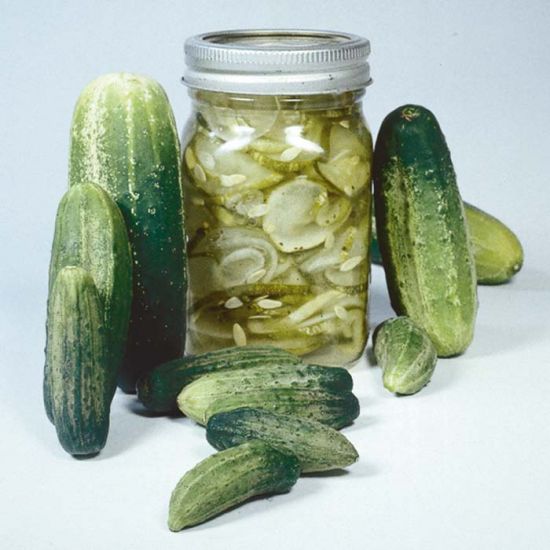Bush Pickle (Cucumber/pickling/bush)
Latin Name: Cucumis sativus
Item #: 1400161
Maturity:
45 Days
Difficulty:
Easy
Suitable for Containers:
Yes
Suitable for Canning:
Yes
45 days. Determinate. Plant averages 2.5 ft/76 cm across, half the size of standard vining types. Medium green fruit average 4-5 in/10-12 cm length with spines. Pkt contains 100 seeds.
45 days. Determinate. Half the size of the standard vining types. Plant averages 2.5 ft/76 cm across, half the size of standard vining types. Medium green fruit average 4-5 in/10-12 cm length with spines. Resistance/Tolerance: IR: Ccu, CMV. Pkt contains 100 seeds.
CUCUMBERS - PICKLING for market & home garden
2-3 lbs/1-1.5 kg per acre; 1 oz/28 g per 100 ft/30 m of row
CULTURE: For early northern crops start seed indoors May 1st. in 2.25 in/6 cm peat pots @ 3 seeds per pot, 0.5 in/13 mm deep, cover seed lightly and firm. Germinate @ 70°F/21°C soil temp. seeds will not sprout properly at lower temps. After germination lower air temp. to 65°F/19°C to prevent soft growth. Feed lightly with 20-20-20 soluble fertilizer and apply fungicide and insecticide 10 days before setting plants outdoors. Repeat fertilizer, fungicide and insecticide the day you transplant while plants are still in flats.
TRANSPLANTING: We usually wait until the soil warms up (June 10-15th.), cucumbers are too soft for those cold, early June nights unless some sort of protection is used. Space plants in rows 4-6 ft/125-175 cm apart and 12-24 in/30-60 cm apart in row. Water thoroughly and mulch with straw, black plastic or hay between the plants. Apply additional fertilizer before blooms appear. Hybrids require 50% more fertilizer than regular types to prevent crooked fruit.
DIRECT SEEDING: Sow outdoors when soil temps. have reached 65-70°F/18-21°C about June 10th in the North. Repeat sowings until July 15th. Sow @ 4 lbs/2 kg per acre in hills (8 seeds per group), thin to 4 seedlings per hill. Large commercial growers increase yields by providing one bee colony for every 2 or 3 acres. Home gardeners usually have plenty of insects at blossom time for pollination but should limit the use of insecticides when plants are blooming.

